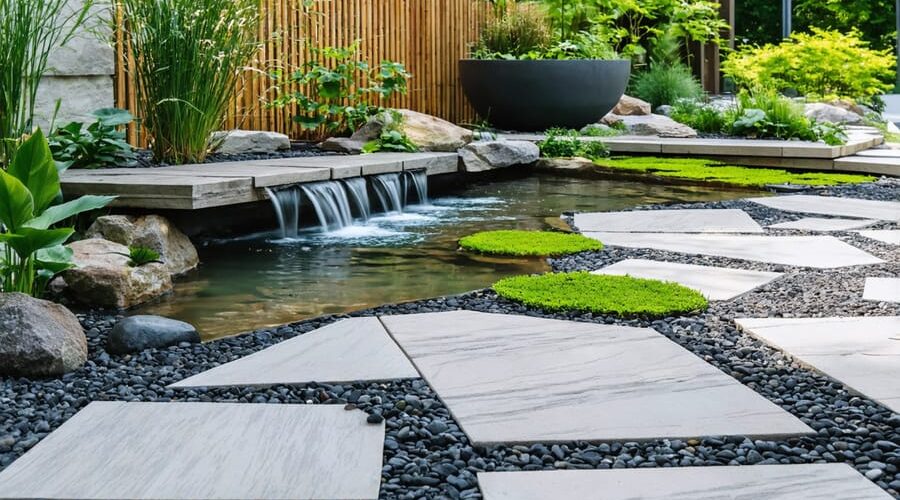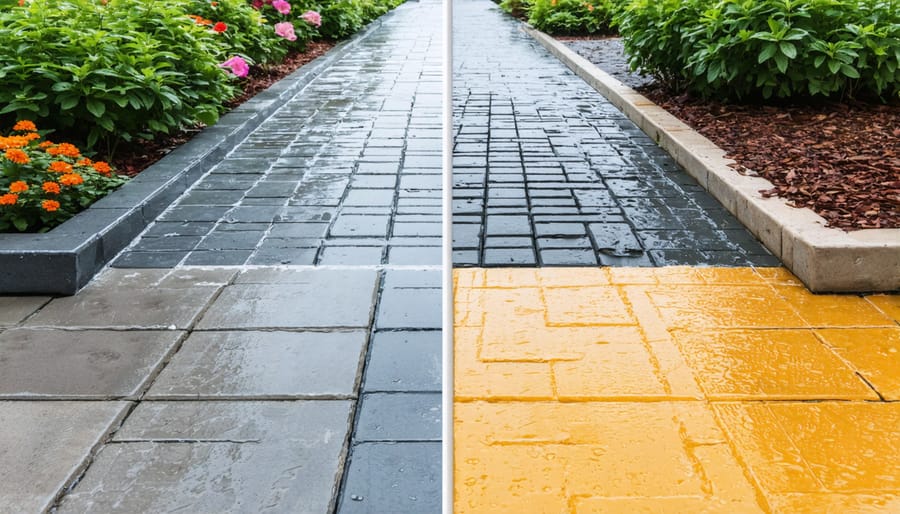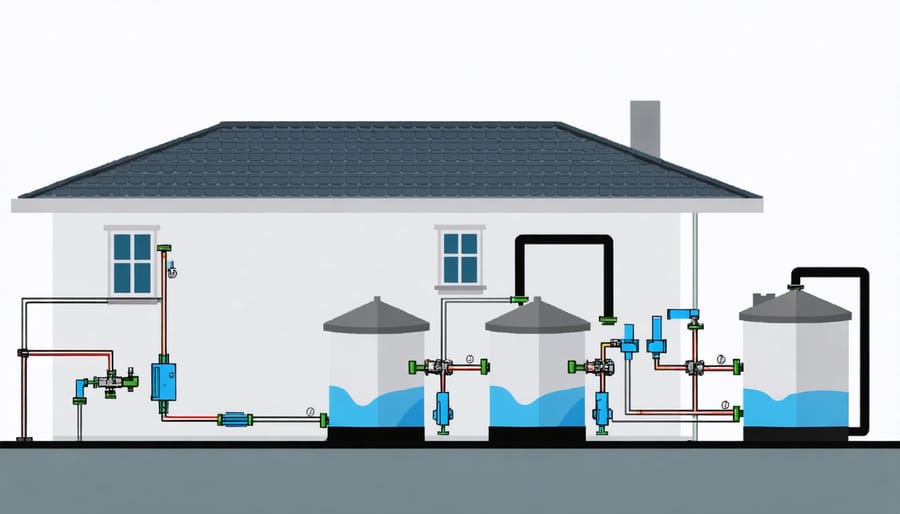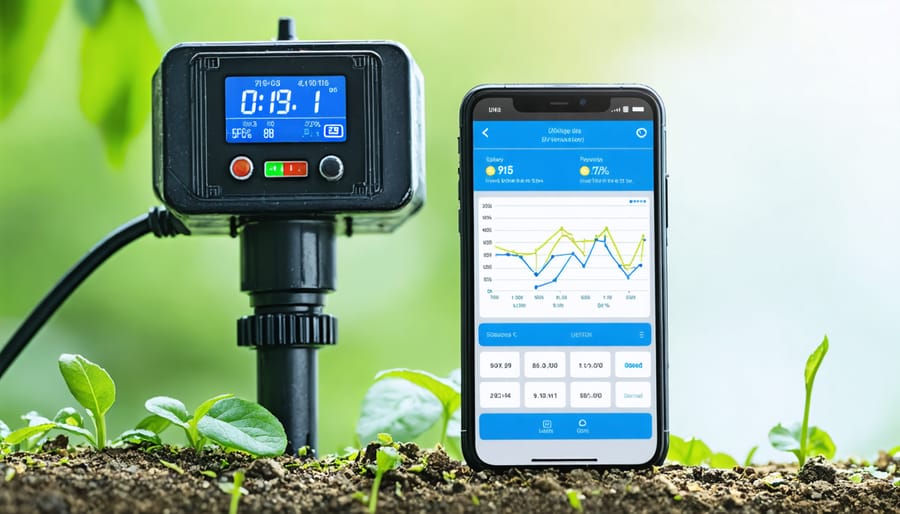
Transform Your Water Garden Into an Eco-Friendly Oasis With These Smart Material Choices
Transform your backyard into a water-wise oasis by installing eco-friendly water features that conserve resources while creating stunning visual impact. Harvest rainwater through strategically placed collection systems, directing overflow into decorative retention ponds that double as natural filtration zones. Install permeable hardscaping materials around water features to maximize groundwater recharge and prevent runoff waste. Incorporate native aquatic plants that require minimal maintenance while naturally purifying water and supporting local wildlife populations.
Water sustainability doesn’t mean sacrificing beauty or functionality. Modern pond designs integrate recirculation systems that reduce water consumption by up to 90% compared to traditional features. Smart automation controls monitor water levels, adjust pump speeds based on evaporation rates, and detect leaks before they become costly problems. These innovative solutions create self-sustaining ecosystems that thrive with minimal intervention while providing year-round enjoyment.
Whether you’re building a new water garden or upgrading an existing one, today’s sustainable technologies make it easier than ever to maintain a vibrant aquatic environment that conserves our most precious resource.
Sustainable Hardscaping Materials for Water Features
Recycled and Permeable Pavers
Creating beautiful water-saving garden paths doesn’t mean sacrificing style for sustainability. Permeable pavers are a game-changer for water-conscious gardeners, allowing rainwater to naturally seep into the ground instead of running off into storm drains.
One of my favorite options is recycled brick pavers, which add character while giving old materials new life. These can be arranged in attractive patterns with gaps filled with pea gravel, creating natural drainage channels. For a modern look, try concrete grid pavers – they’re like puzzle pieces with open cells you can fill with grass or gravel.
Recycled plastic pavers are gaining popularity too. They’re lightweight, durable, and often made from materials that would otherwise end up in landfills. Plus, they come in various colors and styles that mimic natural stone.
When installing permeable pavers, remember to create a proper base layer with crushed stone for optimal drainage. Leave small spaces between pavers and use sand or fine gravel in the joints. This setup helps filter water naturally while preventing weed growth.
For budget-friendly options, consider crushed recycled concrete or reclaimed stone. These materials are often available locally and create charming, eco-friendly pathways that handle water runoff beautifully while adding natural appeal to your garden.

Natural Stone Selection
When selecting stones for your water feature, choosing locally-sourced materials isn’t just environmentally responsible – it’s also a smart design choice that adds authentic character to your project. Start by visiting local quarries or stone yards within a 50-mile radius of your home. This reduces transportation emissions and supports your regional economy.
Look for stones that naturally occur in your area. These will not only blend seamlessly with the local landscape but also provide natural habitats for local wildlife. When examining stones, check for any visible cracks or fault lines that might compromise their durability in water settings.
Ask your supplier about their quarrying practices. Responsible suppliers will have restoration plans for their quarry sites and use efficient cutting methods that minimize waste. Many now employ water recycling systems during cutting and processing.
Consider these sustainable stone options:
– Weathered fieldstone collected during land clearing
– Reclaimed stone from old construction projects
– River rock from approved collection sites
– Locally quarried granite or limestone
Before purchasing, verify that your chosen supplier follows local environmental regulations and has proper permits. Request documentation about their sustainability practices and ask about any certification programs they participate in.
Remember to calculate your needs accurately to avoid over-ordering. Many suppliers will help you estimate the right amount, reducing waste and saving money. When possible, choose irregular shapes that can be dry-stacked without mortar, further reducing your project’s environmental impact.
Water Conservation Systems
Rainwater Harvesting Solutions
Rainwater harvesting is one of the most effective ways to reduce your garden’s water consumption while maintaining a thriving outdoor space. The simplest method begins with installing rain barrels beneath your home’s downspouts. These collection points can store hundreds of gallons of fresh rainwater that would otherwise go to waste.
For larger properties, consider installing an underground cistern system. These tanks can store thousands of gallons and connect directly to your irrigation system. While the initial setup requires more investment, the long-term savings on water bills make it worthwhile.
Don’t forget about surface collection methods. Creating subtle slopes and channels in your garden design can naturally direct rainwater to where it’s needed most. Rain gardens – specialized planted depressions – can capture runoff while adding beautiful native plants to your landscape.
For maximum efficiency, install a first-flush diverter system to filter out debris and contaminants from your roof before water enters your storage system. Adding a simple pump and filter setup allows you to use stored rainwater for more delicate applications like fountain features or greenhouse irrigation.
Remember to check local regulations before installing any large-scale collection system. Many areas offer incentives for rainwater harvesting, making this sustainable solution even more attractive for the water-conscious gardener.

Recirculation Systems
Recirculation systems are the heart of any water-efficient garden, combining smart pump technology with innovative recycling methods to minimize waste. Modern energy-efficient pumps use up to 30% less electricity than traditional models while maintaining optimal water flow. Look for pumps with variable speed settings, which allow you to adjust flow rates based on your needs and save energy during off-peak hours.
Water recycling is equally important in these systems. Installing a basic filtration setup with mechanical and biological filters helps clean and reuse water effectively. Consider adding a settling tank to remove debris before water enters the main filtration system. This extra step reduces pump strain and extends filter life.
For maximum efficiency, position your pump at the lowest point of your water feature and keep pipe runs as short as possible. Every 90-degree bend in your piping can reduce flow efficiency by up to 5%, so plan your layout carefully. Insulate exposed pipes to prevent heat loss and reduce algae growth.
Smart controllers can automate your system’s operation, adjusting pump speeds based on time of day or weather conditions. Some systems even include leak detection features that automatically shut off water flow if problems arise. Remember to perform regular maintenance checks every three months to ensure your system runs at peak efficiency.
By implementing these recirculation techniques, you can create a sustainable water feature that’s both beautiful and environmentally responsible.
Smart Irrigation Controls
Modern irrigation has come a long way from simple sprinkler systems. Today’s smart garden technologies make it easier than ever to maintain a beautiful water feature while conserving this precious resource. These systems use weather data, soil moisture sensors, and automated controls to deliver exactly the right amount of water when your garden needs it most.
The heart of smart irrigation is the controller, which acts like a brain for your watering system. It connects to your local weather station through WiFi and adjusts watering schedules based on real-time conditions. Did it rain yesterday? Your system will automatically skip today’s watering. Experiencing a heat wave? It’ll increase watering frequency to compensate.
Soil moisture sensors are another game-changer. These small devices monitor the moisture levels in your garden soil and communicate with the controller. No more guessing if your plants need water – the system knows precisely when to water and when to hold off. This prevents both overwatering and underwatering, keeping your plants healthy while saving water.
For pond owners, smart controllers can also manage water levels, fountains, and filtration systems. You can monitor and adjust everything from your smartphone, making maintenance a breeze. Some systems even send alerts when they detect potential issues, helping you catch problems before they become serious.

Eco-Friendly Liners and Sealants
Natural Clay and Bentonite Options
When it comes to natural waterproofing solutions, clay and bentonite offer eco-friendly alternatives that have been used for centuries. Natural clay, particularly sodium bentonite, has remarkable swelling properties that can expand up to 15 times its dry volume when wet, creating an effective water barrier.
For DIY pond builders, bentonite clay comes in two convenient forms: a powder that can be mixed with soil or pre-made bentonite panels. The powder method involves spreading a layer of bentonite (about 2-3 pounds per square foot) and mixing it thoroughly with the existing soil. When water is added, the clay particles expand and lock together, forming a natural seal.
Clay panels are easier to install but typically more expensive. Simply lay them like a puzzle across your pond base and sides, overlapping the edges by about 6 inches. Once wet, they’ll expand and create a seamless barrier.
One of the best features of natural clay solutions is their self-healing ability. Small cracks or punctures often repair themselves as the clay naturally expands and contracts with moisture. This makes clay-based liners particularly durable and low-maintenance over time.
Remember to test your soil’s clay content before starting – some areas naturally contain enough clay to achieve proper sealing with just a bentonite supplement. For best results, compact each layer thoroughly and keep the clay moist during installation.
Environmentally Safe Synthetic Liners
When it comes to creating sustainable water features, eco-friendly synthetic liners are game-changers. These modern materials combine durability with environmental responsibility, offering a perfect solution for conscious gardeners. Unlike traditional options, these liners are made from recycled materials and are free from harmful chemicals that could leach into your water or soil.
The latest generation of environmentally safe liners features UV-resistant properties that extend their lifespan, reducing the need for frequent replacements. Many are made from reinforced polyethylene or polypropylene blends that maintain flexibility while being tough enough to withstand root penetration and ground movement. Best of all, these materials can be fully recycled at the end of their life cycle.
Look for liners certified by environmental organizations and those made with post-consumer recycled content. Some newer options even incorporate natural fibers like bamboo or hemp into their construction, providing additional strength while reducing the overall plastic content. These innovative materials typically last 15-20 years when properly installed and maintained.
For maximum effectiveness, pair your eco-friendly liner with a natural filtration system. Many gardeners find that these sustainable liners work exceptionally well with biological filters and aquatic plants, creating a harmonious ecosystem that requires minimal intervention. Remember to choose the appropriate thickness based on your project size – typically 45-60 mil for most home water features.
Maintenance and Long-Term Sustainability
Maintaining your water sustainability project is crucial for ensuring its long-term success and environmental impact. Regular monitoring and proper care will help your water features thrive while conserving resources. Here are some essential year-round maintenance tips to keep your eco-friendly water features running smoothly.
Start with weekly water quality checks using testing strips to monitor pH levels and chemical balance. Clean filters monthly and remove debris from pumps to prevent clogging and maintain optimal water flow. During autumn, install nets to catch falling leaves before they decompose in the water, which helps reduce maintenance work and preserves water quality.
For sustainable water management, consider installing a rain sensor that automatically adjusts your system’s water usage based on natural rainfall. This simple addition can save thousands of gallons annually while keeping your water features perfectly balanced.
Remember to inspect your liner and edging materials every season for signs of wear or damage. Early detection of potential issues can prevent major water loss and expensive repairs down the line. Apply environmentally friendly algae treatments when necessary, and maintain proper plant balance to create a self-sustaining ecosystem.
In winter, protect pumps and filters from freezing by either removing them or ensuring continuous water flow. For regions with harsh winters, consider installing a small heater to prevent ice damage to your system’s components.
Create a maintenance calendar to track regular tasks and seasonal requirements. This helps you stay organized and ensures nothing gets overlooked. Keep detailed records of water testing results, maintenance activities, and any challenges you encounter – this information becomes invaluable for troubleshooting and improving your system over time.
By following these guidelines and maintaining consistent care, your water features can provide years of sustainable enjoyment while minimizing their environmental impact. Remember that prevention is always better (and cheaper) than cure when it comes to water feature maintenance.
Creating a sustainable water garden is more than just a hobby – it’s a commitment to environmental stewardship that brings beauty and harmony to your outdoor space. By implementing the water-saving techniques and eco-friendly materials we’ve discussed, you can significantly reduce your garden’s environmental impact while creating a thriving aquatic ecosystem.
Remember, every drop counts. Whether you’re collecting rainwater, installing efficient pumps, or choosing native plants, each sustainable choice contributes to water conservation. Start small if needed, and gradually incorporate more eco-friendly features as you become comfortable with maintaining your water garden.
Your sustainable water garden will not only provide a peaceful retreat but also serve as an inspiration to others in your community. By sharing your experience and knowledge, you can help spread awareness about water conservation and encourage others to embrace sustainable gardening practices. Let’s work together to create beautiful, water-wise gardens that future generations can enjoy.
